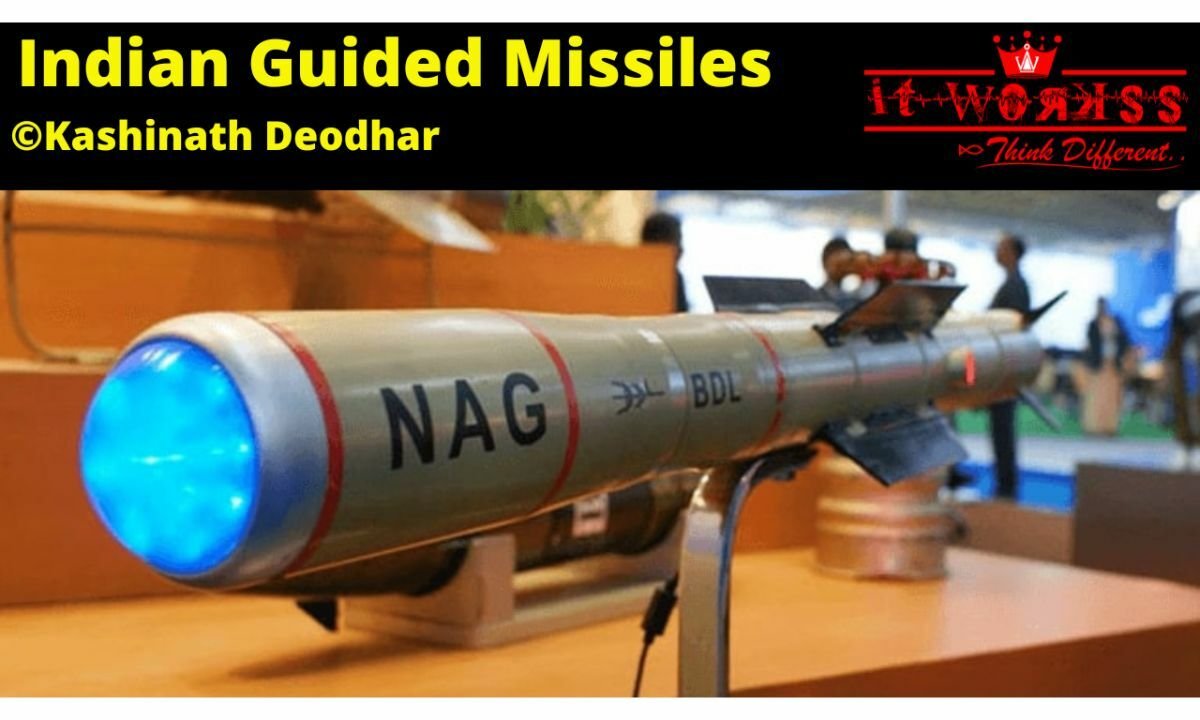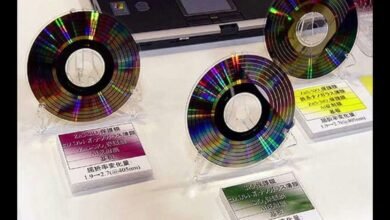Best Indian Guided Missiles – Part 2
© Kashinath Deodhar, Sr Scientist (Retd) (Group Director, ARDE, DRDO, Pune)

Varunraj kalse
Best Indian Guided Missiles – Part 2
Best Indian Guided Missiles – Part 2
© Kashinath Deodhar, Sr Scientist (Retd) (Group Director, ARDE, DRDO, Pune)
Best Indian Guided Missiles – Part 1
- Warhead technology
Warhead is the bomb connected to a guided rocket to destroy enemy targets. It is a payload of missile and consists of shell, explosives and detonators. Weight depends on type of target to be destroyed and size of missile. Fuse pulse activate the detonator which triggers the detonation of explosive main charge giving total destruction of target by providing blats, fragmentation or effects as desired to customize end effect at target end e.g. continuous rod warhead, annular blast fragmentation warhead, selectively amiable and directional energy warhead.
India had varied kind of indigenously developed missiles having various roles, ranges, application etc. which are listed below.
1) Prithvi Missile Series
- A) Prithvi 1 (P-1), SS-150, SRBM class, using single stage motor, 150 km range using 1,000 kg warhead to destroy area targets made for Army.
- B) Prithvi 2 (P-2), SS-250, SRBM class, using two stage rocket motors ranging from 250-350 km having 500-1000 kg warheads for Army and Air force.
- C) Prithvi 3 (P-3), SRBM called SS-350, Two stage rocket motor used, having maximum range of 350 to 600 km and carry 250 kg – 500 kg Warhead made for Army, Navy and Air force.
All the above three versions of Prithvi i.e. P1, P2 & P3 were developed as short range ballistic missile (SRBM) which classed in surface to surface category. Till date seven successful Dhanush which is a stabilized platform to fire Prithvi-2 or P-3 missile from a warship, against other ship target or land target.
2) Agni Missile Series
The Agni missile series started as only technology demonstrator project of re-entry vehicle, however, on success Agni 1 (A-1), Agni-2 (A-2) and Agni-3 (A-3) were successfully developed for long ranges as MRBM and IRBM in IGMDP. This development finally leads to ICBM after the official closure of IGMDP in 2008. The details of Agni series are given in the following table. Agni-V achieved a minimum range of 5,500 km and India entered in a club of ICBM.
| Name | Type | Stages | Range km | Warhead (kg) |
A1 = Agni-1 A2 = Agni-2 A3 = Agni-3 A4 = Agni-4 A5 = Agni-5 | MRBM IRBM IRBM IRBM ICBM | One Two and Half Two Two Three | 700-1200 2000-3000 3500-5000 3000-4000 5500-8000 | 1000 1000 1500 1000 1500 |
Agni-v is developed with MIRV warhead. Agni can be deployed with Conventional warhead also with 15 KT to 250 KT nuclear warheads. These missiles are having road mobility. Unofficial sources are claiming that India is developing A-6(Agni-6) missile & Surya missile aiming to have 8,000 to 12,000 km range. However it is not supported by official statement.
Shourya missile is also SRBM Capable of hypersonic Speeds having range of 600 km capable of carrying one conventional or nuclear bomb. (War Head)
BrahMos is a fastest cruise missile in the world. It was jointly developed with Russia. Land attack and Anti-ship versions of BrahMos Missiles are already in production and inducted in Indian Army and Indian Navy. Whereas Air-launched as well as sub-marine launched variants are being developed or under testing, the speed of BrahMos missile is Mach 3 (Three times the speed of sound in air) super-sonic cruise missile very deadly on the target destruction. 7 Mach speed version development work was initiated and being pursued.
Long Range subsonic cruise missile ‘Nirbhay’ twice tested successfully, and at able to fly 0.6 Mach Speed.
‘Prahaar’ missile is developed with solid fueled rocket motor, surface-to-surface short range tactical ballistic missile equipped with Omni directional warheads. Prahaar can attack and hitting both tactical and strategic targets.
‘Astra’ is developed for Indian air force and can be mounted on any fighter Aircraft and from there itself it can be fired on any aerial target beyond visual range, therefore, this missile is called ‘Astra-BVRAAM’ i.e. Astra, beyond visual range air to air missile.
Nag missile was developed as a part of IGMDP. It is a third generation ‘fire and forget anti-tank missile. The capacity of ‘Nag missile’ is to destroy any kind of latest tank. Nag missile has “top attack'” feature and NAG missile carrier i. e. ‘NAMICA’ is developed a tracked vehicle for mobility. Nag is ‘fire and forget’ type of missile already inducted the Indian Amy.
HELINA is a helicopter mounted Nag missile and is a variant of Nag missile to be launched from Helicopter. Structurally it is different from Nag Missile however technologically it is the same.
DRDO is developing certain new technologies and has undertaken a Hypersonic Technology Demonstrator vehicle HSTDV project aimed demonstrating autonomous flight of a scramjet integrated vehicle using ethylene. Recently it had a very successful design trials.
Also, recently DRDO have successfully conducted the missile SMART. SMART is a canister based, long range anti-submarine missile made for Indian Navy. Which is a short form of Supersonic Missile Assisted Release of Torpedo. The SMART missile can be fired from sea shore or from warship, which will carry the Torpedo with supersonic velocity in air to travel maximum distance and it will separate the shield, reduce the velocity by VRM mechanism, and release the Torpedo near the target in water, then Torpedo will hit the enemy submarine to kill i.e. destroy without giving time to enemy to respond.
Another latest missile successfully tested is RUDRAM, which is a New Generation Anti-Radiation Missile (NGARM). This missile is an air to surface (ASM) anti-radiation missile, made up for suppression of enemy air defences (SEAD), can be launched from a range of altitudes with large standoff distance for destroying enemy surveillance radars, tracking and communication systems. This will detect and home in on an enemy radio emission source.
‘Akash’ missile is a medium range mobile surface to air missile (SAM) defence system developed which can target aircraft or low flying missile up to 30 km away at an altitude up to 18 km. It is in services from 1990’s and now it is handled by Army as well as Air force. Rs. 23,000 crores order placed for equipping few regiments with Akash Missile. This has a capacity to intercept the target in Air working in conjunction with indigenously developed ‘Rajendra’ Radar System. ‘Akash’ is very effectively deployed for Air Defence. It will be providing India with “Hawai Suraksha Kavach”.
Trishul missile was also a surface-to-Air missile developed as a part of IGMDP for short range quick reaction purpose. Trishul is continued further as new ‘QRSAM’ being developed.
K-Missile series unofficial sources stated that India have developed series of K-Missiles under secret project. These missiles were named after the father of Indian missiles Dr. APJ Abdul Kalam. Under K-missile series of submarine-launched ballistic missiles (SLBM) developed by DRDO to boost its second strike capabilities to augment its nuclear deterrence. Information is kept mostly classified. K-missiles have Launch Platform of Arihant Submarine class. K-missiles are faster, lighter and stealthier than Agni Missiles. K-15 missiles having range of 750-1500 km been introduced in service and is under production at BDL Hyderabad.
Indian Ballistic Missile Defense Programme (BMD program):
DRDO have been working on this BMD program to provide ‘Aerial Surakhsha Kavach’ against any incoming aerial threat of Ballistic Missiles. It is thought of to have multi layer defence system. New two types of interceptor missiles are being developed as below.
- Prithvi Air Defence (PAD) – for exo-atmospheric interceptior capable of engaging 300 km to 2000 km class of ballistic missiles at a speed of Mach 5 at an altitude of 80 km. PAD Missile is named as Pradyumna Ballistic Interceptor.
- ii) Advanced Air Defense (AAD): The AAD missile is named as Ashwin Ballistic missile interceptor. Ashwin operates at endo-atmosphere at an altitude of 20-40 kilometers.
Anti-Satellite Missile (A-SAT): India has become a space power and emerged as a fourth country in the world when India successfully tested ‘Mission Shakti’ on 27 Mar 2019. To safe guard India’s space assets and to provide credible deterrence against threats to our growing space assets and missions like Chandrayan-1, Chandrayan-2, Mangalyan on Mars Orbit Mission (MOM), Gaganyan for man in space mission etc.
By carrying out A-SAT missile test using an interceptor missile i.e kinetic kill vehicle to nutralise the target satellite Microsat-R, which was launched in January 2019 by ISRO in a Low Earth Orbit at an altitude of around 300 km. The A-SAT missile was launched from Dr. APJ Abdul Kalam island which was earlier known as wheelar island in Odisha. DRDO shown by bringing down by actual hitting target as live satellite orbiting the earth at 300 km an attitude. The mission was successfully completed within 3 minutes. DRDO has acquired the technical capabilities required for an extremely high degree of precision to intercept fast moving target, orbiting satellite with very high velocity in the order of 8-10 km/s. The low orbit was chosen to ensure the automatic decay of the debris in space within a few weeks’ time. The test under Mission Shakti demonstrated the nation’s capability to defend its assets in outer space and is shows the strength to safe guard India’s space programme which is a back bone of India’s security, economic and social infrastructure.
At the end of this article to summarise the development of Indian guided missiles, it is seen that in the last four decades India took a gigantic leap in this field of Defense and space, especially in Missiles. This put all Indians on new heights in the world. Also in the field of atomic energy and nuclear weapons another land mark was set in 1998 by successfully conducting five nuclear tests. Considering the assets and technologies we have –
- Atom Bombs like thermonuclear fission and thermonuclear fusion technologies with sub kiloton Yield.
- All variety of Ballistic Missiles, SLBM, Air to Air Missiles etc.
- BMD programme, Suraksha kavach.
- ASAT Missile programme.
- Strategic as well as tactical missiles
- Supersonic and world’s fastest cruise Anti-ship and land attack missile Brahmos.
- SMART, and Rudram Missiles.
The development of the latest and most modern varied missile technologies, which is based on a strong foundation laid by Dr APJ Abdul Kalam, is possible with consistent and tireless efforts of DRDO, which has helped to put our country “Bharat Mata as a Vishwa Guru”.
|| Bharat Mata ki Jay ||
लेख आवडला तर
जास्तीत जास्त 🆂🅷🅰🆁🅴 करा
Best Indian Guided Missiles missiles.
Disclaimer: This article is just for providing knowledge and updates to readers, this content is made through internet research, this article has no intention to the heart or promotes any brand/company/startup, this article is only made for knowledge, education, entertainment purposes, and there is no promotion at all. “This blog and I do not claim any right over any of the graphics, or images used in this article.
All rights reserved to the respective copyright owners.” Copyright Disclaimer under Section 107 of the copyright act 1976, allowance is made for fair use for purposes such as criticism, comment, news reporting, scholarship, and research. Fair use is a use permitted by copyright statute that might otherwise be infringing.
Weapons Mean Power
Very Destructive Weapons
Tatas are True Industrialists
लेख आवडला तर
जास्तीत जास्त 🆂🅷
Disclaimer: This article is just for providing knowledge and updates to readers, this content is made through internet research, this article has no intention to the heart or promotes any brand/company/startup, this article is only made for knowledge, education, entertainment purposes, and there is no promotion at all. “This blog and I do not claim any right over any of the graphics, or images used in this article.
All rights reserved to the respective copyright owners.” Copyright Disclaimer under Section 107 of the copyright act 1976, allowance is made for fair use for purposes such as criticism, comment, news reporting, scholarship, and research. Fair use is a use permitted by copyright statute that might otherwise be infringing.





